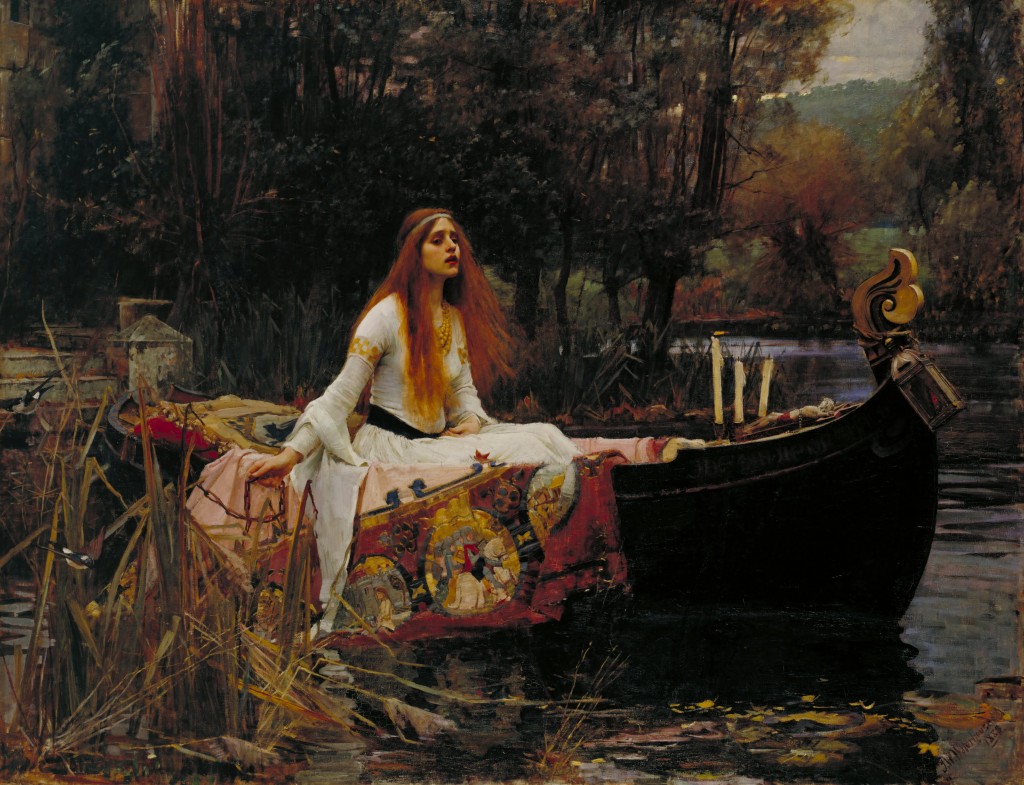In the Victorian period of the late 19th century, classical themes and topics enjoyed a revival. One of the most popular sources of inspiration were the tales of King Arthur and the knights of Camelot. Sir Walter Scott’s Idylls of the King re-told many of these stories. Scott’s works were wildly popular, so it’s no surprise that characters from Arthurian legend emerged in many artworks of the time, like this painting, John William Waterhouse’s “The Lady of Shalott.” The painting depicts the Lady’s final journey down the river as she abandons her tower on the Isle of Shalott for love. It is her unrequited love for Lancelot and her urge to join him in Camelot that brings down the curse that ends ultimately in her death. Notice how in the painting she has brought with her the tapestry that she was weaving in the tower, a sad remembrance of her shadowed life.
Tennyson’s poem echoes the classical medieval ballad in its use of repetitive words and phrases (“Shalott” and “Camelot”), the inclusion of a story of destruction (the Lady’s life and death), a domestic issue (by choosing love, the Lady seals her fate), and a supernatural element (the curse).
Neo-Celtic musician Loreena McKennitt set the words of Tennyson’s poem to original music, using instrumentation and style that would not have felt out of place in the Victorian era. The video below incorporates the words of the poem with artworks from the period depicting the Lady, her chosen knight (Lancelot), and her doom.

